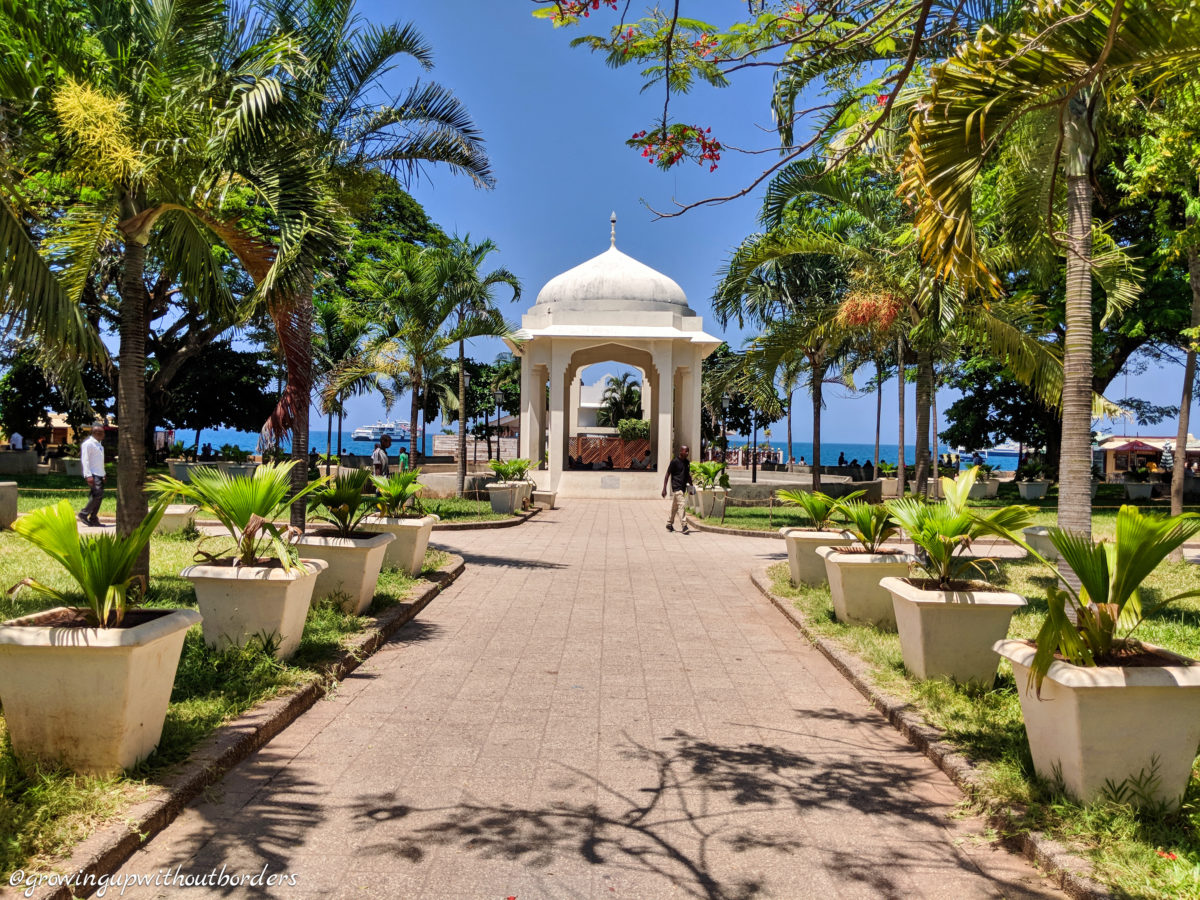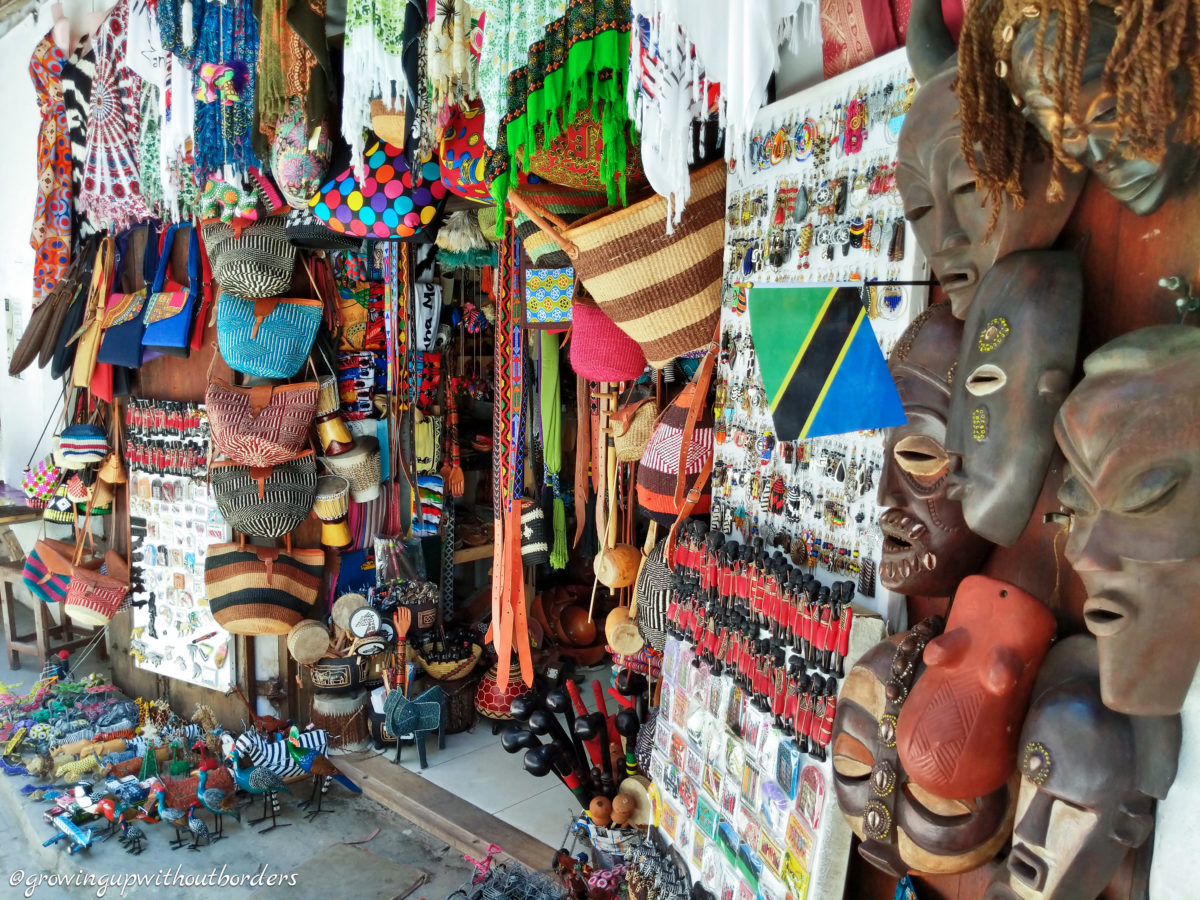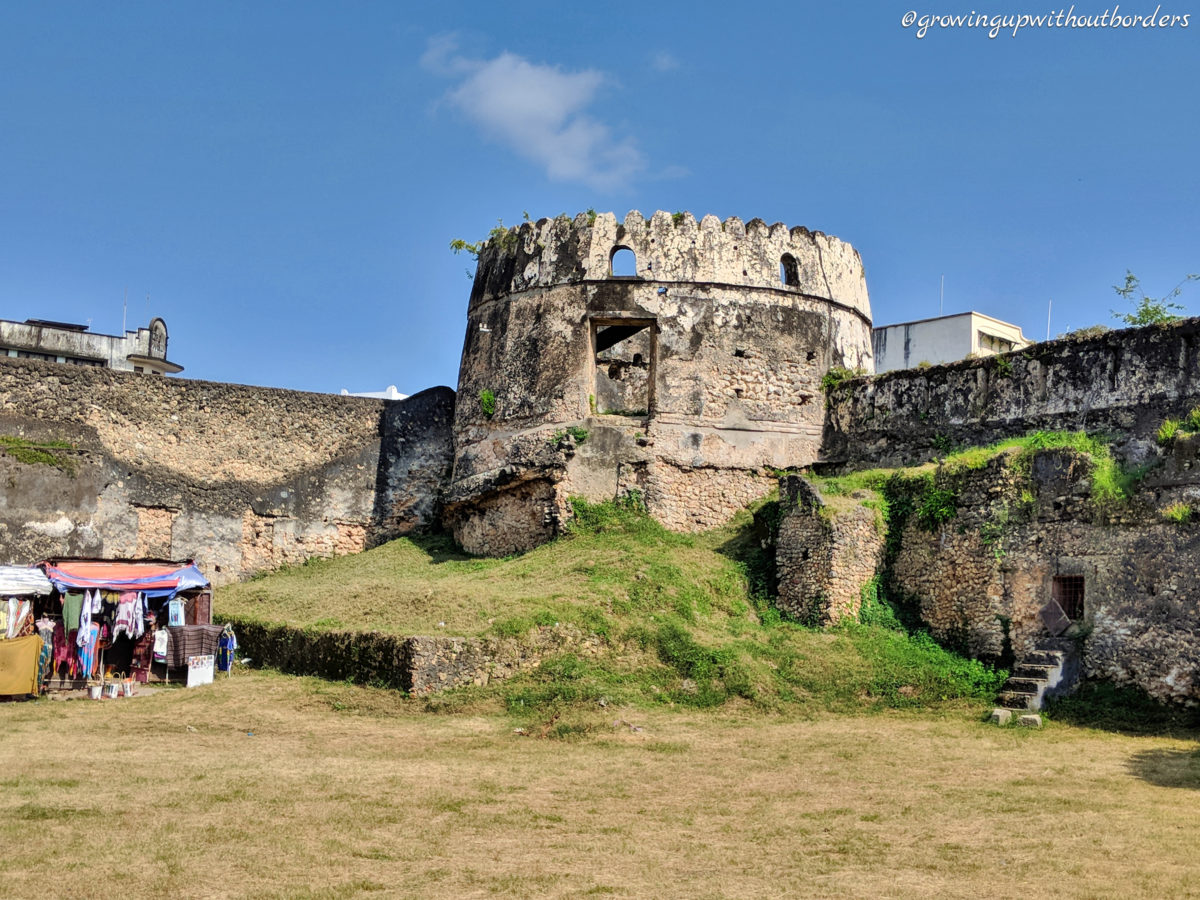The Magic of Stone Town, Zanzibar
As Toto’s famous song still rang in our ears, we arrived to Africa.

To be honest, this was probably the biggest challenge and the most exciting journey for us, since the beginning of our travels. One hundred days on this beautiful and wild continent were ahead; we had so many destinations to explore and dive into cultures that are entirely different from the western world.
Words cannot describe how excited we were, so we advise you to check our YouTube videos to grasp that feeling.
Are you familiar with that trembling in your chest you get when you are about to go on a first
date with your crush or give a business presentation in front of someone whose opinion you highly value? Most commonly, as soon as you say the first words, everything falls into place, and you feel like you are just where you are supposed to be, calm and content.
That is how we felt once we stepped on the African land!
Our first destination was Stone Town, Zanzibar.

Unfortunately, the hotel we made reservations at was overbooked so, we spent the very beginning of our adventure searching for accommodation. This went on for two hours, and we were pretty exhausted. Once we found a place to sleep and charge our batteries, our bodies were begging for shower and rest.
To be frank, I am surprised that we had enough energy to record any material at that point.
Enough chit-chat, for now, let’s get straight to the point!
What should you know about Stone Town, Zanzibar?
Even though its name might confuse you, Stone Town is not a town for itself. Also known as Mji Mkongwe, it is the cultural heart and the old part of Zanzibar City which is the capital and the largest city of Zanzibar, semi-autonomous region of the state of Tanzania.
If you are in search of an authentic experience of traditional African towns, this is a place to go.

For the past 200 years, the Stone Town managed to remain unsullied by the hand of modern culture. That is one of the reasons why it has recently been declared a World Heritage Site by UNESCO.
Stone Town is a perfect place for getting lost in the labyrinth of winding streets and alleyways and wandering through bustling bazaars for hours, discovering fascinating handiwork of the locals. Its mosques and extravagant Arab houses will amaze you.

The first thing you’ll notice are the doors! Brass-studded, carved and wooden they keep inviting curious tourists to come closer and open them. At the same time, they create a perfect background for fantastic Instagram photos!
19th-century architecture dominates this part of the Zanzibar City. During these years, Zanzibar was considered to be one of the paramount trading centers in the Indian Ocean. However, once you take a closer look, you will notice that many buildings and houses are in bad shape or need of full renovation.

Unfortunately, as the locals found out years later, the coralline rock, which was Zanzibar’s main building material, wasn’t durable enough.
It started eroding, and the Stone Town Conservation Authority had to step in and organize the restoration of several buildings to preserve the towns unique magnificence. As soon as you visit the Old Dispensary, you will realize what are we talking about. Also, it is most likely that the hotel you are staying at is housed in one of the Stone Town’s renovated buildings.
You have to admire their effort to preserve their cultural heritage.
What to visit in Stone Town, Zanzibar?
Let us list out the most important tourist attractions in Stone Town:
The Old Dispensary
The first thing every traveler checks out in the Stone Town is the Old Dispensary. We already mentioned it before, when we talked about Zanzibar’s local building renovations and restorations. However, this grand four-story building deserves to be written about.
Also known as the Stone Town Cultural Centre, the Old Dispensary left us in awe with its decorative balconies. It is located on the seafront, on Mizingani road, halfway between the harbor and the Palace Museum.
For the first half of the 20th century, this historic building served as a dispensary. Tharia Topan commissioned it in 1887. He intended to build a charitable hospital for the poor. Unfortunately, he died before the building was finished. In 1900, Indian Merchant, Haji Nasser Nurmohamed bought the house and turned it into a dispensary.
Over the years, the Old Dispensary decayed. Fortunately, it was successfully restored in 1994, with funding from the Aga Khan Trust for Culture.
The market
Looking for cheap clothing, tasty food or colorful souvenirs? You can buy all of that on the Stone Town’s market.

People bring their produce to this vibrant place from all over the island, and both locals and tourists come to buy things they can’t get in their own villages or regular shops.

If you are looking for something special to bring home, the market will offer you a huge selection of colorful khangas. The local women wear these traditional cotton cloths, produced in Tanzania and Kenya, as a part of Swahili culture.
At last, feel free to haggle! You won’t offend anyone, and you can get some great deals. We managed to purchase five hats for only $2.50.
Livingstone’s House
Dr. David Livingstone, a Scottish Christian Congregationalist, medical missionary and an explorer in Africa is an essential figure in the Stone Towns history. Many of his journeys began and ended in Zanzibar, where he fought with all his heart to finally stop the slave trade.
His house, which was initially built in 1860 for Sultan Majid, was used by many explorers as a starting point of their missions. However, Dr. David Livingstone lived here before commencing his last journey in 1866, and the building, which is now the main office of the Zanzibar Tourist Corporation is definitely worth seeing.
The Peace Memorial Museum
If you want to get a fascinating insight into Zanzibar’s history, this is a place to go. The Peace Memorial Museum is located in the southern end of the Stone Town, near the junction of the
Creek Road and Kaunda Road.
Also known as House of Peace, this mosque-like building will offer you a chance to dive into Zanzibar’s archaeology, history of early trade and slavery, architecture, lives of famous sultans, explorers, and missionaries. It even includes Dr. David Livingstone’s medical chest.
The Palace Museum
If you go down the Mizingani road, you will quickly notice the Palace Museum as it captures your attention with its magnificence. This stunning white building, which was originally called the Sultan’s Palace was built in the late 1890’s for members of the sovereign’s family. In 1911 it became the Sultan’s official residence.
However, after the revolution in 1964, it was given a new name – the People’s Palace. Finally, in 1994 the building was turned into a museum, which you can visit today. It exhibits the history of Zanzibar’s Sultans. You can see their personal possessions and furniture that survived the revolution.
The House of Wonders
Don’t worry; you can’t miss the House of Wonders. It is one of the largest buildings on the island. Shaped like a perfect rectangle, with several stories, it is topped by a large clock tower and surrounded by tiers of beautiful pillars and balconies.
The House of Wonders (Beit el Ajaib) was built back in 1883, as a ceremonial palace for Sultan Barghash. A marine engineer designed it to be the first building in Zanzibar that was equipped with electric light and an electric lift; hence the name.
Since 2002, the House of Wonders houses the Museum of History and culture. You should put aside several hours to visit this place because there is so much to see and discover!
The Arab Fort
Right next to the House of Wonders, sits the Arab Fort. This large, dark brown building was built between 1698 and 1701 by the Busaidi group of Omani Arabs.
It was initially used as a defense against the Portuguese and the Mazrui, which is the reason why it is topped by castellated battlements. Today, it is open to visitors, and since 1994 it houses an open-air theatre which is used for performances of traditional and contemporary music, dance, and drama.

Pro tips for curious travelers
Now that you know what to visit in the Stone Town, Zanzibar, you are ready to find out more about our experience there, and the tips and tricks that will give you an even more pleasant stay!
· First of all, you have to be ready for humid and hot weather. It is probably hotter than you expect. So, drink a lot of water, dress light and expect beds with canopies. These are here for your safety and comfort, as many insects which are potential disease carriers can cause you harm.
· If you want to save some money, you should travel in the low season, which goes for all other places in the world, not just Africa. However, the high season in Zanzibar is from November to February. September is the optimal month to schedule your vacation in. It is a low season month, but it still has great weather. If you go for months between April and August, you can count on heavy rains.
· Looking for a place to eat? Our recommendation is Luk Maan. They have delicious food and great pricing. The service is a bit slow, but it is worth a wait. You can expect your food to resemble Malaysian cuisine, but less spicy.

On the other hand, if you decide to go for the hotel breakfast, you will get lots and lots of fruits and smoothies, but also eggs and bacon. They make some rather interesting combinations with ginger.
· If you want to leave an island by ferry, you’ll need to book the ticket three days in advance. You can do this online, but you still have to come here three hours before the departure to pay for the tickets you booked, because it is incredibly crowded.
· Except for the things we listed above as the most important tourist attractions, Slavery Market Monument is something you have to see. The art piece was done by Swedish sculptor Clara Sornas, and it includes the original chains that were used to imprison the slaves. It is situated next to the fifteen chambers which had the capacity for seventy-five women and kids and fifty men. Seeing this can be stressful and provocative, but it is a unique opportunity to teach your children about the horrors and cruelty of slavery and racism.

· After visiting the Slavery Market Monument, we recommend you to go to the Prison Island. The ticket costs $4 per person. Here, the history of the slave trade continues to unravel. However, this is also a place where you can relax a little bit and see giant turtles.

If you look closely, you will see they have numbers on their back, which indicate how old they are!
· Most importantly, remember that Stone Town is a real community, where real people live and work. Their culture might be very different from ours, but their lives are not a theater show or a theme park created for tourists. Show some respect and sensitivity to the local people. They are very welcoming, and they will help you with whatever you need.
Put on some comfortable shoes and head out to the streets of Stone Town! Miracles are waiting
for you.

Don’t forget to check out our video for more information.
Subscribe to our YouTube channel, and follow us on Instagram and Facebook. There are many adventures ahead of us, and we would like to share our experience with you!




I am really inspired with your writing talents and also with the structure to your weblog. Is that this a paid topic or did you customize it yourself? Anyway keep up the nice high quality writing, it’s rare to peer a great weblog like this one these days.
Thanks! It’s not a paid topic we’re just documenting our travels to share with the world.